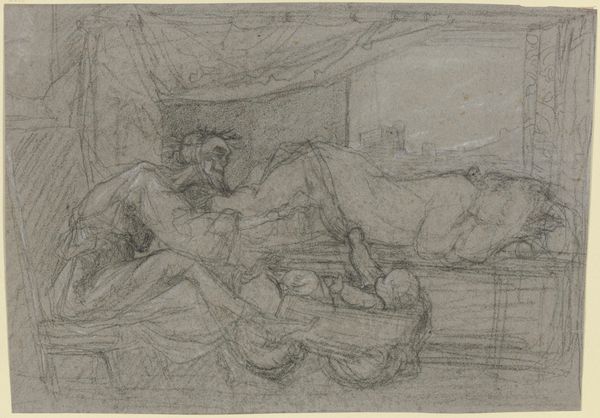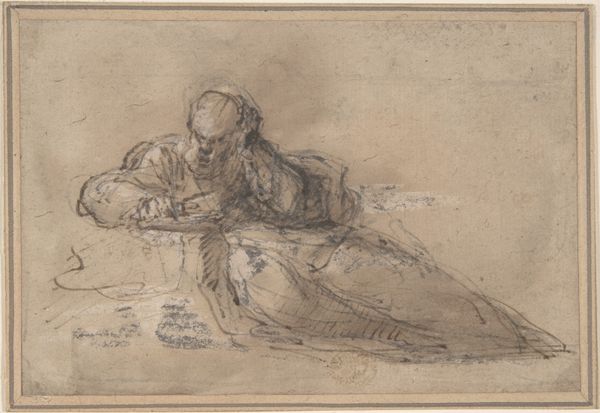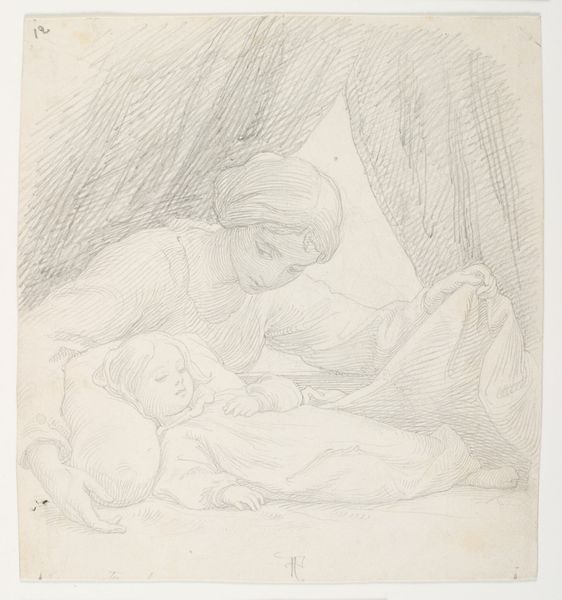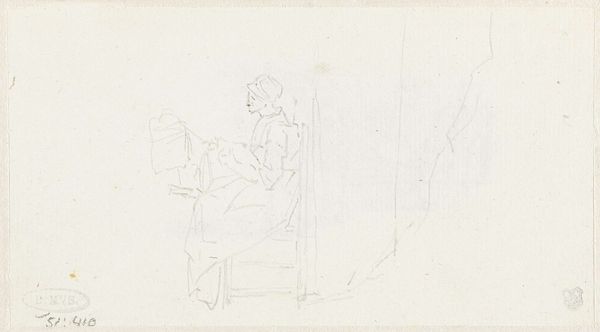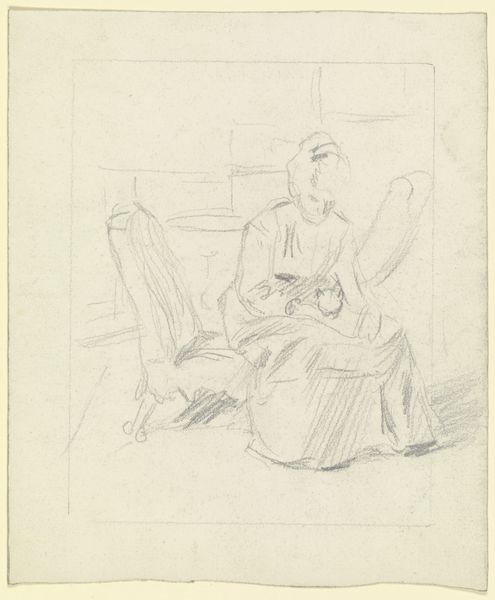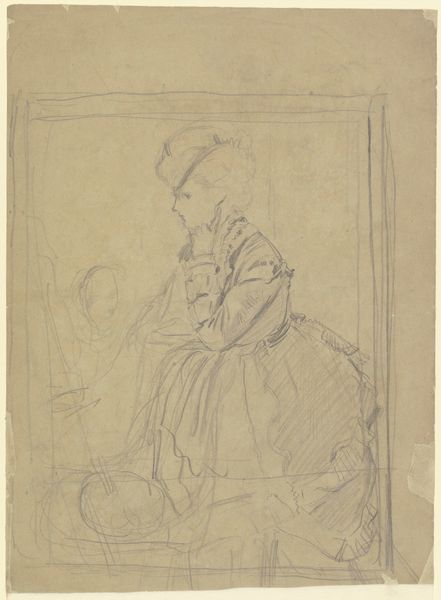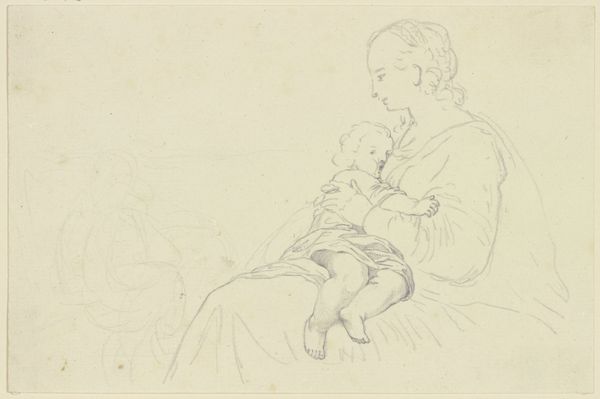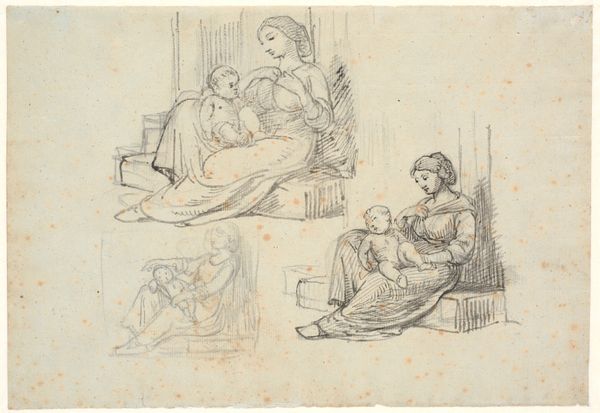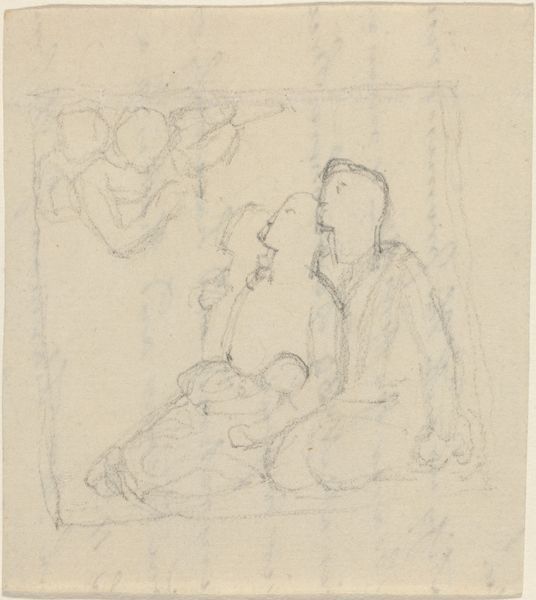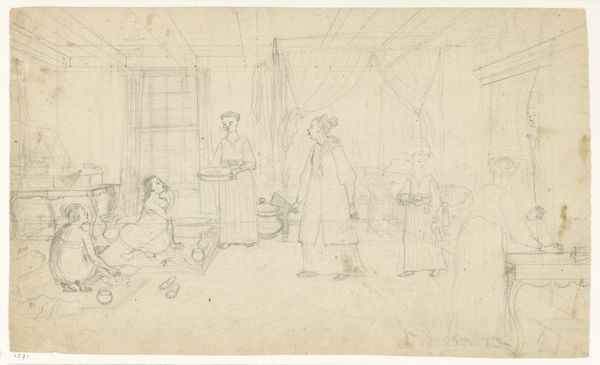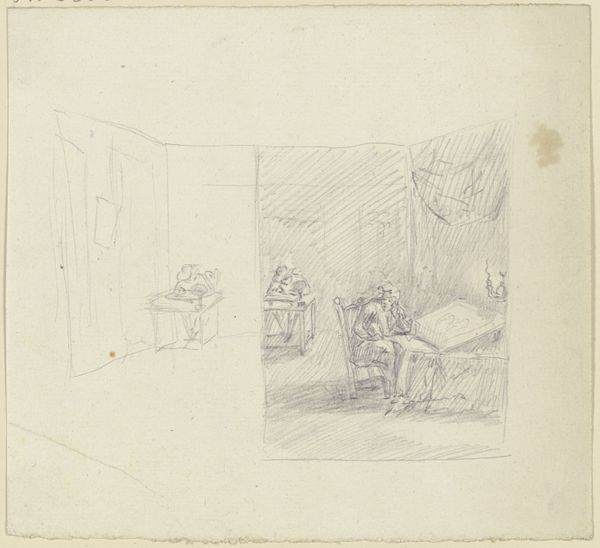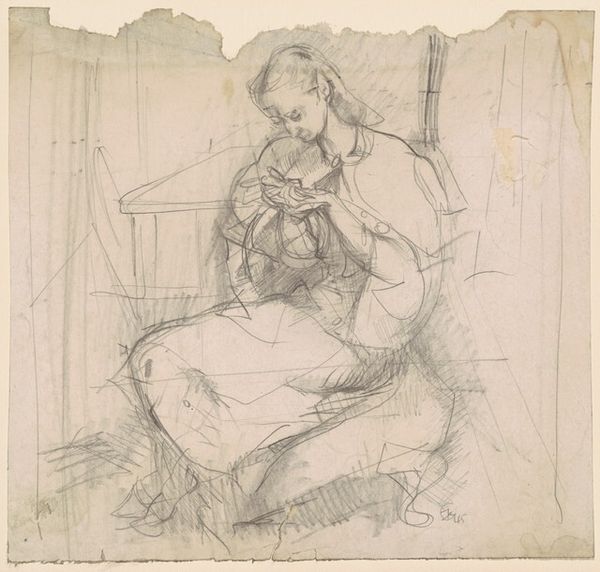
drawing, pencil
#
portrait
#
drawing
#
pencil sketch
#
group-portraits
#
pencil
#
genre-painting
Dimensions: 192 mm (height) x 211 mm (width) (bladmaal)
Curator: Here we have a pencil drawing, titled "Anne med to børn, t.h. to katte," by Elisabeth Jerichau Baumann, created sometime between 1781 and 1881. Editor: My first impression is a quiet domestic scene, almost dreamlike with its delicate lines. It evokes a sense of intimacy, wouldn't you say? A protective sphere built of motherhood. Curator: Absolutely. The presence of two cats to the right could represent both the tamed domestic space, but also the slightly unpredictable and chaotic undercurrents beneath it, if one reads felines as figures of independence or the untamed. Do you feel the cats contrast with the overall domestic harmony of the composition? Editor: That's a compelling reading! Though I see something different. Given the time period, such scenes served as subtle vehicles to validate the critical role of women as nurturers, but I question if domestic harmony was accessible to all women at the time. What societal privileges do these characters likely embody? Curator: Precisely. One may look to the head covering on the mother, as that indicates marital status and her defined role within that era’s socio-religious context. The overall composition hints at very clear boundaries: Womanhood, motherhood, childhood—all distinctly separate roles defined by symbols such as clothing, relative size, and physical placement within the home, each of which further codified expected social roles. Editor: That's such an insightful take. How do you see that informing the depiction of the children in her lap? The positioning and proximity also feels quite significant, right? Curator: Indubitably. Consider the implied power dynamics between them and their relationship to her. This central maternal figure signifies nurturing love and also immense social regulation. She is both the giver of life and a purveyor of social mores. I wonder about the artist's intent in presenting this visual rhetoric during that period. Editor: Agreed. It's this interplay of the universal and the socially specific that makes such genre scenes compelling and that prompts me to question visual tropes around idealized motherhood even today. Curator: Indeed. This piece continues to invite further readings into both our visual histories and our contemporary values, prompting reflection on social constructs through deceptively quiet moments captured in time. Editor: Right. This examination reminds us of art's remarkable power to ignite such vital discussions even now.
Comments
No comments
Be the first to comment and join the conversation on the ultimate creative platform.

